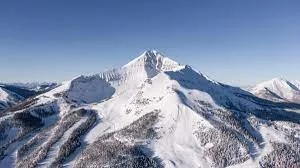
Guide Program Overview
The Guide Program
The Big Sky Resort Snowsports Guide Program is a program that consists of Mountain Sports Instructors who are trained and approved to lead paying guests in Tram access, Special Access, and Hiking Terrain at Big Sky Resort. There are three categories of Guide personnel, each with different approval to lead paying guests in specific terrain.
Guide 1’s (G1) are the entry level guides and are approved to lead paying guests in liberty, marx and lenin.
Guide 2’s (G2) are the next level of guide personnel and are approved to lead paying guests in special access terrain.
Guide 3’s (G3) are able to lead paying guests in all open terrain including special access and hike-to terrain throughout the resort.
Otter slide is closed to all instructors
Guide Development Program
To enter the Guide Program an instructor must at a minimum hold a PSIA-AASI or an international certification equivalent Level 2 certification.
Once an instructor meets the above requirements and has the approval of their respective manager they are accepted into the Guide Development Program. Instructors in the Guide Development Program must attend Guide Development trainings.
Pathway to Guide
-
A Guide 1 is approved to lead guided products in Liberty Bowl, Marx and Lenin (no Otter Slide).
To become a Guide 1:
Prerequisites
Level 2 certification in primary discipline
Baseline skiing/riding skills:
Confident in south side tram terrain (green/yellow conditions)
Consistent parallel turns and control
Skills needed to attend check off
Steep Skiing/riding
Tram Protocols
Patrol/Mountain Ops/Guest Service Relations
Beacon Check and basic skills
Route training:
Liberty, Marx, Lenin routes
Self-Arrest
Personal Performance
Where and how to teach it
Guide MA Clinic (guest skill evaluation)
Guest Goal management
Kind, professional and respectful with team members
Required Training
Early Season Training
Schoox e-learning
Guide 1 check-off day
*Recommended to attend guide briefings
-
Able to lead guided products off the Tram including Gullies 1-3, Dictators, special access Big Couloir and North Summit snowfield major routes (NO Otter Slide, Pockets, or Great Falls)
To become a Guide 2:
Prerequisites
Confident skiing/riding in all tram terrain (green/yellow conditions)
Rescue fundamentals course and Avy 1 certification
Skills needed to attend check off
Steep terrain skiing/riding
Tram Protocols
Patrol/Mountain Ops/Guest Service Relations
Beacon Check and basic skills
Route training:
Big Couloir
North Summit Snowfield
Sign-out protocols
Advanced MA Guide Training (through level 9)
Guest evaluation for Special Access terrain
Guest Goal management
Kind, professional and respectful with team members
Required Training
Early Season Training
Schoox e-learning
Guide 2 check-off day
*Recommended to attend guide briefings
-
Able to lead guided products in Headwaters and A-Z Chutes Hike to Terrain and all Special Access and Tram products (No Otter Slide, No Pockets, please check with manager first for any non-typical patrol check out terrain)
To become a Guide 3:
Prerequisites
Expert skiing/riding in all Big Sky terrain (green/yellow conditions)
Advanced techniques:
Pivot slips in corridor
Stem christies
Hop turns
Kick turns
Skills prerequisite before attending check off day
Steep skiing/riding training:
Headwaters
A-Z
Route selection and safety protocols
Tram Protocols
Patrol/Mountain Ops/Guest Service Relations
Beacon Check and basic skills
Advanced guiding techniques
Beacon skills demonstration
Guest evaluation for hike-to terrain
Guest Goal management
Kind, professional and respectful with team members
Required Training
Early Season Training
Schoox e-learning
Guide 3 check-off day
*Recommended to attend guide briefings
Approved Guide Terrain
-
Liberty, Marx, Lenin (no otter slide)
-
Gullies 1-3, Dictators, Wave wall, Rockville, North Summit Snowfield main routs, Big Couloir (no otter slide or great falls)
-
Any regularly open in-bounds terrain. Anything that is irregular or rarely open needs manager approval (no otter slide)
